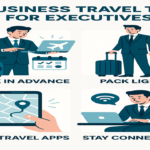Wondering about what a QR code is and how to scan a QR code? QR codes are becoming popular day by day due to their convenience to use. Read more to familiarize yourself with how QR codes can be scanned to provide you with the necessary information.
Strange-looking squares have been seen on signs, magazines, billboards, websites, and more regularly on store shelves. QR codes are these squares. The QR (Quick Response) codes are comparable to barcodes and can be seen on a variety of products.
Many feature hidden URLs and other information that might be quite useful when researching a product while on the go. A smartphone’s camera can scan a code and communicate information. It might send the viewer to a website, make a phone call, and so on, depending on the type of code.
Because practically everyone has a camera phone or smartphone, QR codes have become quite popular. A QR code reader is very certainly already installed on your smartphone. Simply take a picture of a QR code with a QR code compatible app, and you will be brought to a website with more information about anything you are looking for.
Where can one find QR codes?
Quick response codes also known as QR codes are a practical way to show a tiny amount of information that can be scanned and processed by mobile devices, allowing physical items to virtually become interactive by delivering information that can be scanned like a website URL.
The most simple and most common application of Quick Response codes is to display website data.
QR codes can be similar to UPC codes, but they are used for a considerably broader range of purposes, not just to identify things but also to convey information. To put it another way, most people are familiar with Universal Product Codes, also known as UPCs. Every item you purchase at the grocery store, and nearly any retailer these days, will be scanned by the cashier. Based on the code it picked up, the computer immediately recognizes the product.
People place QR codes on their websites, which quite frankly, defeats the point and ensures that no one will ever scan it. The goal is to move people from the physical to the virtual world. They are already there if they are on your website, Facebook page, Twitter account, or other online property.
The Power of QR Codes
It has never been easier to make your own Quick Response code. There are a plethora of services that make it simple to generate an image of this code. You print the image they offer you on whatever you want and put it wherever you want; it is a sort of label.
Though Quick Response codes are typically used to represent URLs, they can be used to represent any type of data which includes the URL of the website, text message, send a message through email, a record of the address book, show some text on your computer screen, etc.
The way your content is read and understood is what determines its success. As a result, the scanner must understand what to do with the text it receives after scanning the QR code. As a result, practically every scanner recognizes a URL and will open it. Most will let you start a text message rather than creating or sending one for you. However, they will not always work in more sophisticated and less popular situations.
Airline boarding pass
This one is unique in that rather than scanning the QR code, you display it on your phone. In this situation, the airline will email you a QR code to display on your phone’s screen. This allows the airline to scan your unique code, which represents your passenger information, your digital boarding pass, while you are at the airport.
Wine bottles
QR codes are being used by many vineyards on their bottle labels. You may want additional information when you are out and about and test a bottle you like, or while you are shopping at a wine shop. So, instead of typing in a long URL, which most people would not do because it is inconvenient, you can scan the bottle as a cashier would.
The only difference is that your QR code scan will provide you with more information about the wine or vineyard whereas your UPC scan will identify the item in stock and calculate how much of your money to take.
In Asia, QR codes are everywhere, and they are becoming increasingly popular in Europe and North America. Simple walking around will cause you to notice these things. Anyone with a phone with a QR scanner may scan the code at the bottom and be on their website in a matter of seconds.
Common uses of QR codes
The following are some of the common uses of QR codes:
- Add these to your business cards if you want to include more information that would not fit on such a small piece of paper.
- To promote your website or lead customers to product support, include them in product packaging.
- Use one with a link to your location on Google maps to help people discover your business.
- You can use them as a coupon. It can be scanned by the user to reveal a discount code.
- Put your email address or phone number on them and post them on your website.
- Put them on all of your business stuff.
How are QR codes better than barcodes?
QR codes are a fantastic invention that is only now beginning to gain traction. People rapidly recognized the value of barcodes when they were first introduced in the 1970s, and they have since become widespread. Every product in every supermarket is bar-coded, so all a checkout needs to do is scan it, and the item’s data is logged as a sale. This allows the checkout slip to detail what was purchased, as well as the purchasers to observe the daily product turnover and plan their re-stocking accordingly.
When boarding an airplane, one’s luggage is bar tagged, allowing the item to be scanned by an automatic baggage sorter and assigned to the appropriate flight. A barcode is placed on one’s passport, a bracelet with a barcode is placed on one’s wrist if they are admitted to the hospital, and so on.
Universal Product Code is one of the barcoding systems, although anyone can design their own so that the bar code can be read on their own system. Bar codes have the disadvantage of being able to carry a limited amount of data (usually 20 characters) and requiring sophisticated readers to scan them.
Since around 1996, a new coding system known as the Quick Response Code (QR Code) has been in use. It is much more than a bar code, and its applications are only just getting started. It’s a two-dimensional matrix code that can store a lot of information. Furthermore, no special reader is required because any camera connected to a PC running the decoding software can quickly read the code.
When QR codes are scanned, they quickly direct to websites, storing up to 7,000 characters of data from billboards and more.
How QR codes can be helpful for marketing?
QR codes, also known as quick response codes, are two-dimensional (dimensional) bar codes with black squares on a white background. The code, which can include a call to action, a link, or an SMS (Short Message Service) message, is interpreted by an application or software. These codes are frequently presented in advertising materials, newspapers and magazines, and on television to communicate information. The creator can track information by using records linked to QR codes. It’s possible to boost sales by knowing how many times things are scanned and what actions are taken.
Quick response codes (QRCs) are a great method to brand your products or services. Use these types of codes to link from a resume to another webpage with information about you, or to use them in a party invitation to link to a blog post, for example.
How to use QR codes for marketing purposes
- People between the ages of 25 and 40 are huge proponents of QR codes. When shopping for items and services, the most popular scanning places are retail outlets, grocery stores, and at home. Whoever scans the code provides information to marketing agencies on how to offer their items and which demographics to target.
- Market in specific locations by using codes. If QR codes are scanned mostly at home, newspapers, magazines, brochures, and pamphlets may be the best options.
- The second most popular location for QR code scanning is retail stores and grocery stores. Marketers can utilize this data to incorporate information about the product, the company, and even similar products that are coming out soon.
- Use the code to link to product surveys, store and product specials, and company websites to take advantage of your customers.
- QR codes have been shown to be effective marketing tools for piquing consumer interest. Scanning the code with your smartphone will reveal all of the reasons why you require a specific product or service. Customer satisfaction decreases and sales increase.
Keep a lookout for QR codes, which can be found on coupons, flyers, periodicals, and other marketing kinds of stuff. One can get ideas for how they are employed and come up with your own inventive ways to include them in future ads and promotions.
Unlock More Sales with QR Codes: Engage Customers and Boost Conversions
Embrace QR codes to elevate your business promotions. These codes, scannable via smartphone apps, swiftly connect users to text, URLs, or phone numbers, embodying ‘quick response’ technology. Simplify access and eliminate typing errors with these mobile-friendly tools.
Users scan QR codes using a mobile app, effortlessly accessing web pages or messages without manual input. Each scan directs users to a mobile-optimized landing page tailored for seamless mobile viewing. Enhance user experience with easy navigation and instant access to business information and exclusive mobile coupons.
Mobile coupons drive foot traffic and online sales effectively. Offer enticing deals like buy-one-get-one or exclusive discounts, showcased on mobile-friendly pages. Green and cost-effective, these digital vouchers reduce paper waste while encouraging sharing among potential customers, amplifying your reach organically.
Promote your QR codes through various channels—print ads, emails, or signage—to maximize visibility and engagement. Embrace mobile marketing tools strategically to harness higher leads, conversions, and save money seamlessly.
Tap into the mobile revolution with QR codes, mobile landing pages, and enticing discounts to elevate your marketing strategy and drive sales.
How can one create a QR code?
It is really easy to make a QR code. There are a number of websites that make it quite simple to create one. Kaywa is one of them. It has a form where you may select the type of content (either a website URL, text, phone number, or SMS) and then fill in the required information before clicking generate. There is literally nothing to it. Your newly created QR code appears to the left, where you may save it to your computer by left clicking or ctrl-clicking on Mac. The options are simply limited by your imagination from there.
How to scan a QR code with my phone?
Google Lens is a fantastic program for not just reading QR codes but also browsing the web for products and copying text from printed pages. The program is available for free download from the Google Play Store. After installing the app, there is a tutorial.
Take a screenshot of the QR code after installing the program and following through the tutorial, and then just share it with Google Lens. After you tap the share button, you will see a lens icon appear.
How to scan a QR code on android?
QR codes were created to improve upon the technology of bar codes. QR codes are more practical since their square design allows them to be scanned both horizontally and vertically. Moreover, QR codes were read with scanners before cellphones were invented for inventory management. Because of smartphones, the process is now a lot more advanced. Scanning QR codes allow you to read the information associated with them. This can be done with a smartphone app or directly with the camera on your smartphone for some newer models.
Scanning QR code on android using mobile camera
You can try scanning QR codes without an app as well. Use the method below to see if your camera is capable of doing so:
- Open your camera app and point it steadily at the QR code you wish to scan for two to three seconds.
- A notification will show whenever scanning is enabled.
- If nothing happens, you may need to activate QR code scanning in your settings app.
- If you don’t have QR codes enabled in your settings, your device would not be able to scan them natively. But don’t panic, all this implies is that you will need to get a third-party QR code reader app.
Scanning QR code on android 6.0
If you have an android phone running an android 6.0 marshmallow, you can use a feature called ‘now on tap’ to read QR codes directly. To make this feature useful to read QR codes, follow these steps:
- Open the Google app after it has been installed.
- Enable now by opting in.
- Select ‘screen search’ from the settings menu.
- When you hold the home button or search by voice, enable the topmost toggle.
- Hold the home button on your android phone to activate ‘now on tap’, which allows you to scan QR codes with your camera.
- You can also use a third-party QR code scanning software if you don’t want to use ‘now on tap’.
How to scan a QR code on an iPhone?
Scanning QR Codes with an iPhone is simple because the technique is pretty consistent across iOS versions. Apple’s iOS is the only operating system it uses on its smartphones.
If you’re not sure which version of iOS your phone runs, or if you want to test scanning QR Codes without an app and use your camera, follow these steps:
- Open your camera app and point it steadily at the QR code you wish to scan for two to three seconds.
- A notification will show whenever scanning is enabled.
- If nothing happens, you may need to activate QR code scanning in your settings app.
- Open your camera app and point it steadily at the QR code you wish to scan for two to three seconds.
- If a QR code is not an option in your device’s settings, it would not be able to read QR codes natively. In this case, one can use a third-party application.
Conclusion
QR codes emerged to surpass the limitations of barcodes, offering robust error tolerance and storing 100 times more data. They revolutionized data accessibility by enabling scanning in both horizontal and vertical orientations, a feat barcodes couldn’t achieve. Their widespread adoption was propelled by the proliferation of smartphones, making QR codes ubiquitous for businesses to seamlessly connect consumers with links and information through quick scans.












